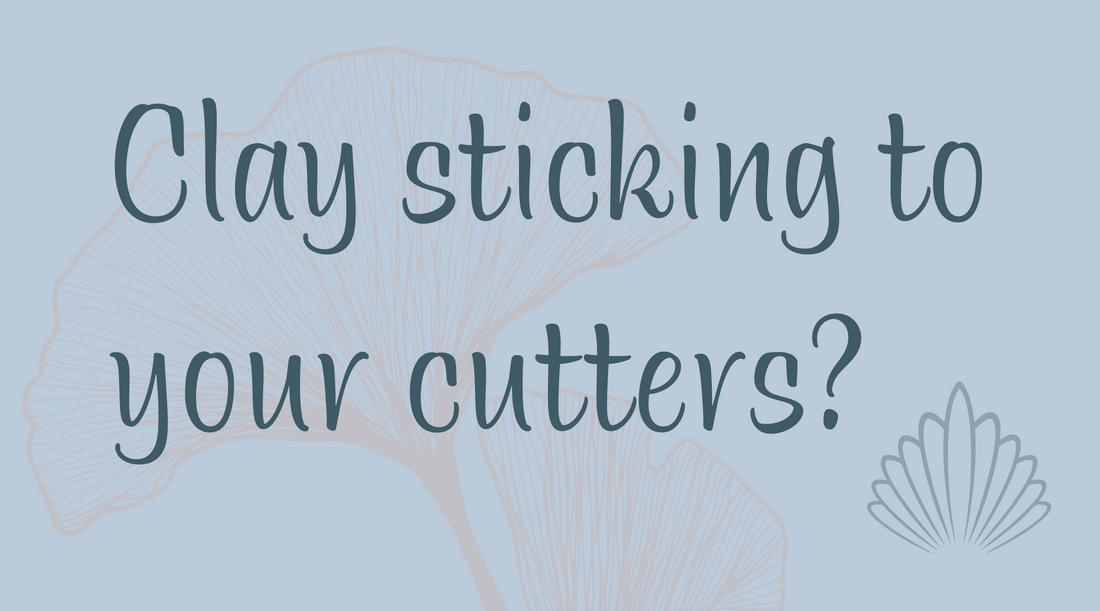
How to Keep Your Clay from Sticking to Your Polymer Clay Cutters
A quick explanation about our debossing cutters specifically:
Our debossing cutters are for use with clay that is approximately 2.5 - 3 mm thick. On my Atlas pasta machine this is about a number 2 or 3, but all machines vary slightly. If your clay is too thick, the debossing details will press too deep into the clay, and it won't look very good. It may also create a less durable design after curing. Clay that is too thin won't show the debossing lines at all. The picture below shows the Art Deco Crown pressed into clay that is both 2.5 mm thick (top) and 3.0 mm thick (bottom).
Something else that's special about our debossing cutters is that the debossing blades are beveled, usually asymmetrically. This just means that we're able to add a little bit of dimension to our designs. Some areas will appear to be slightly in front of other areas, even though your clay is essentially 2D.

For the top Crown, I used #3 on my Atlas machine. You can see that the debossing lines are present, but they don't impress into the clay very far. The bottom Crown was a #2 on my Atlas machine and I rolled the clay down just slightly to get it from 3.3 mm to about 3 mm thick. Here you can see that the debossing blades have left a deeper impression. I think they both look lovely and it's just a matter of personal preference which you prefer.
Preventing clay sticking to any cutter:
First, it is recommended that you use a cutting surface that your clay will really stick to. Examples would be glass or untextured ceramic tiles. Cutting your clay while it is on wax paper, parchment paper, or a silicone baking sheet will cause your clay to stick to your cutter, no matter what you do. Make sure you roll or press your clay down well onto your clean, smooth cutting surface. You really need it to stick!
A common route that people will often take is covering their clay with cling wrap before using cutters. This prevents the clay from sticking and provides a nice domed look to your pieces that some people love. Note that the cling wrap may make it a little harder to get clean cuts and you definitely have to push harder. I don't find that the cling wrap method is great for use with debossing cutters as it prevents all of the debossing details from leaving nice clean impressions in the clay.
When using detailed or small cutters, it's always a good idea to coat your cutter blades in a thin layer of corn starch. Press the cutter into the corn starch and then tap or brush the excess starch out of your cutter. I like to have a fan-style paintbrush handy for use with corn starch. I use the handle of the paintbrush to tap the handle of the cutter and then I use the bristles of the brush to gently remove any excess starch. It's not a good idea to tap the blades of your cutter on anything as this may damage the thin cutting blades. The corn starch should prevent the clay from sticking to your cutter. If your clay is especially sticky, you can also dust your clay with a thin layer of cornstarch before cutting as an added layer of anti-stick protection. Once you cut out your shape, any excess cornstarch can be gently brushed away with a soft paintbrush.
If you're using a very detailed cutter or perhaps a cutter with very small areas and just coating your clay and cutter in cornstarch just isn't working, you may have to try the half-press method. With this method coat your cutter and clay with cornstarch and press your cutter halfway into your clay slab. Lift the cutter and dust your clay with a little more corn starch. Use your finger to gently move the cornstarch into the depressions left by your half cut. Place your cutter back into the same spot on your clay and press it into the clay all the way this time. This method ensures that there's cornstarch between the cutter and the clay, even in the really sticky parts that you just cut.
Some people prefer to dip their cutters in water or spray a fine mist of water over their clay before cutting. This can be a great technique, but be careful if you're using Fimo, which doesn't react well with water. I also personally don't find that water works quite as well as cornstarch with very tiny or detailed cutters.
If you're using cornstarch, you've tried the half-press method, and still having problems, your clay may just be too sticky or overly soft. You may have to leech your clay a bit before cutting it. To do this, place your rolled out clay slab between two pieces of plain printer paper and let it sit for an hour or so. The paper will pull out excess plasticizers or oils that may be present in the clay, making it difficult to work with.
Your clay may also be too thick. In addition to the design just not looking quite right, if too much clay is getting smooshed up into your cutter, the clay will get stuck! Always make sure you're using the recommended clay thickness for the brand of cutter you're using.
Unfortunately, I have also realized over the years that Sculpey Souffle isn't always the best clay for very detailed cutters. That soft souffle texture is created with teeny, little microbeads. Those microbeads make the clay just a bit less sticky and less likely to stick well to your cutting surface. Since this whole method relies on your clay sticking well to your cutting surface, sometimes Souffle just won't be the right choice for every cutter.
You can also put your rolled out clay slab into the freezer/fridge before cutting it. This makes it firmer and easier to handle. This is especially helpful if you're having problems getting your clay off of your cutting surface without distorting it.
Here's a quick video showing everything discussed here:
